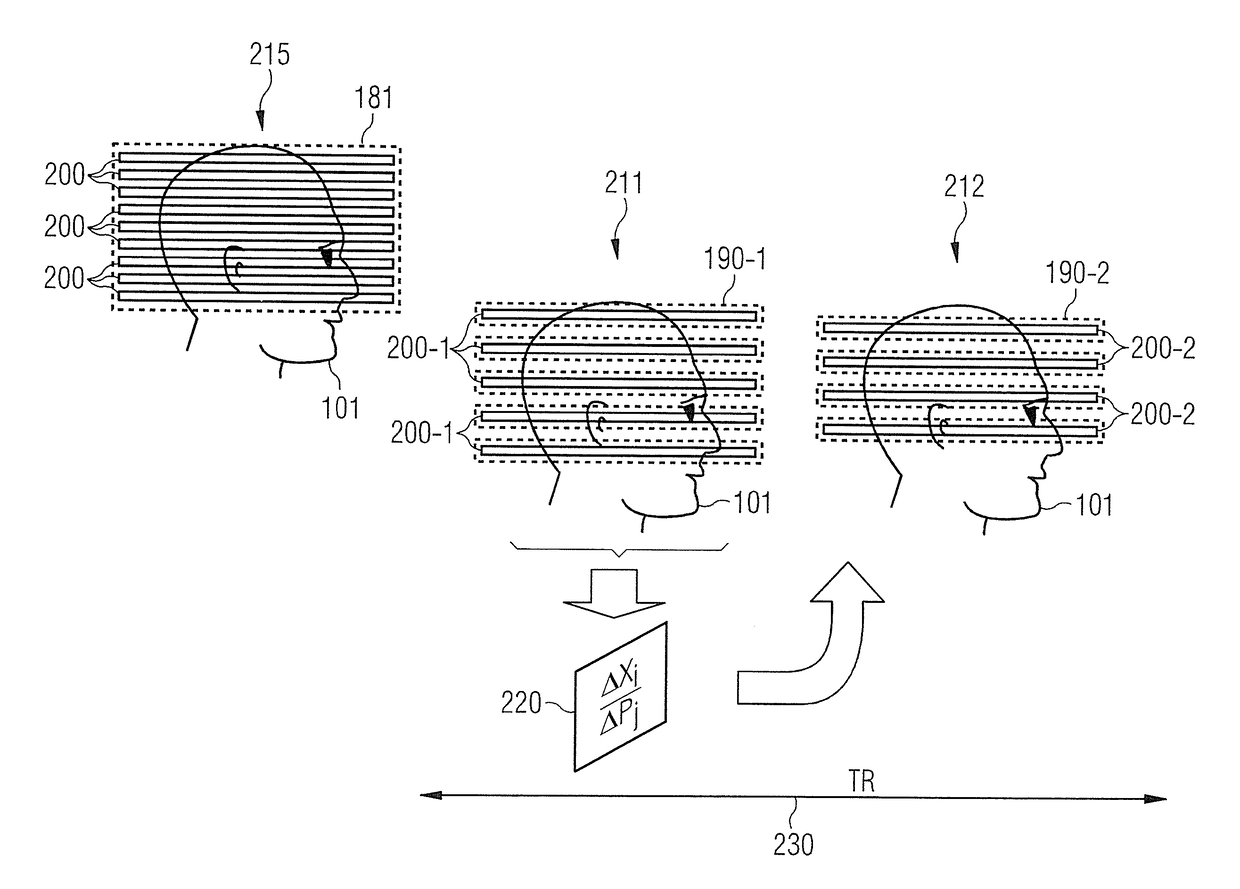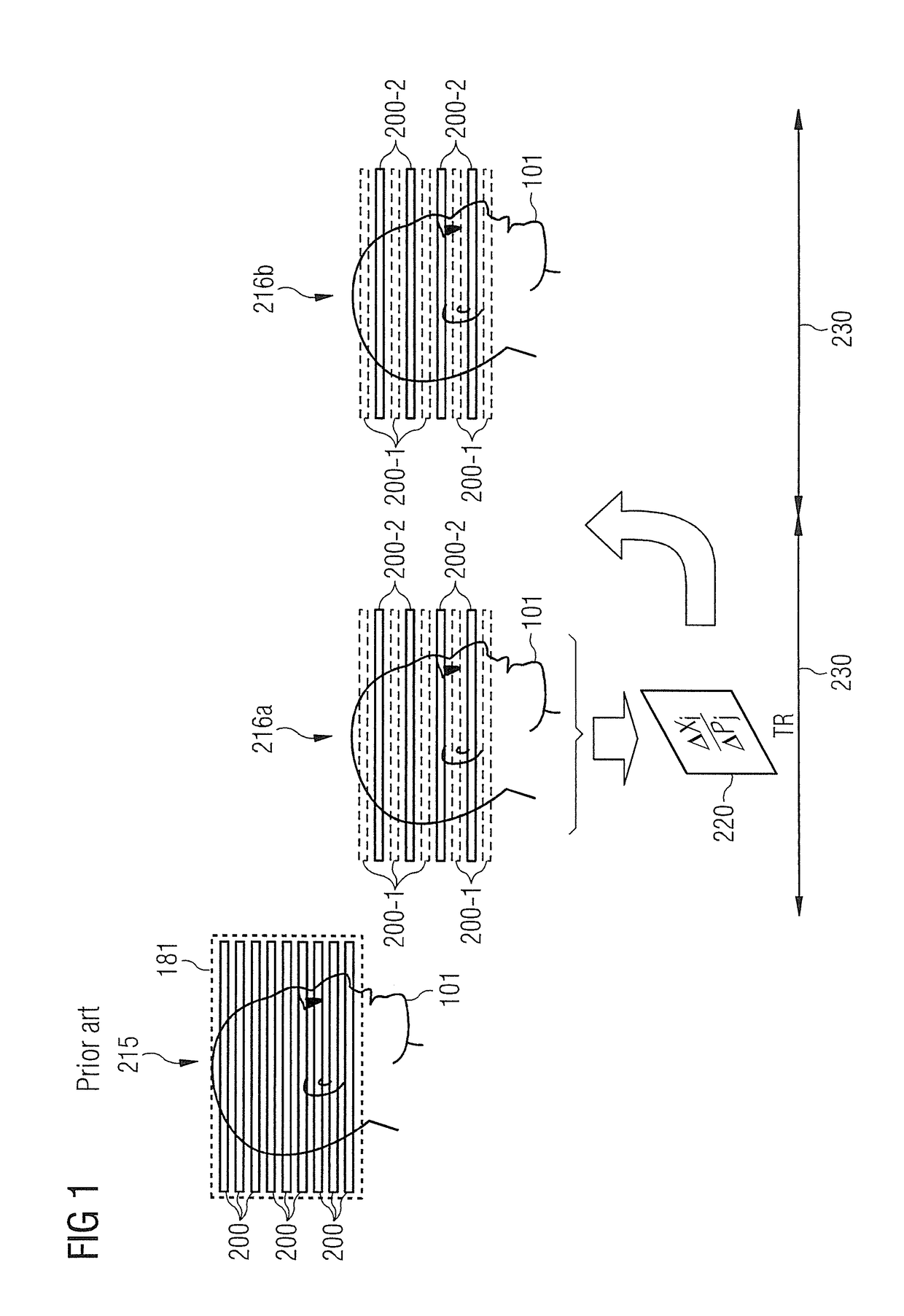Magnetic resonance apparatus and method for prospective motion correction
a magnetic resonance and motion correction technology, applied in the field of magnetic resonance imaging, can solve the problems of reducing the mr image quality, motion artifacts, and purely retrospective techniques suffering from inherently limited motion correction accuracy, and achieve the effect of reducing the bold contrast distortion interaction between spatially adjacent slices and long-term stability
- Summary
- Abstract
- Description
- Claims
- Application Information
AI Technical Summary
Benefits of technology
Problems solved by technology
Method used
Image
Examples
Embodiment Construction
[0061]The present invention will now be explained in greater detail using preferred embodiments with reference to the accompanying drawings. In the figures, the same reference characters denote identical or similar elements. The figures are schematic representations of different embodiments of the invention. Elements shown in the figures are not necessarily drawn to scale. Rather the various elements shown in the figures are reproduced such that their function and general purpose will be understandable to the average person skilled in the art. Connections and links between functional units and elements shown in the figures can also be implemented as an indirect connection or link. A connection or link can be implemented in a wired or wireless manner. Functional units can be implemented as hardware, software or a combination of hardware and software.
[0062]Techniques for prospective motion correction in MR imaging will now be explained. A region of interest to be imaged is subdivided ...
PUM
 Login to View More
Login to View More Abstract
Description
Claims
Application Information
 Login to View More
Login to View More - R&D
- Intellectual Property
- Life Sciences
- Materials
- Tech Scout
- Unparalleled Data Quality
- Higher Quality Content
- 60% Fewer Hallucinations
Browse by: Latest US Patents, China's latest patents, Technical Efficacy Thesaurus, Application Domain, Technology Topic, Popular Technical Reports.
© 2025 PatSnap. All rights reserved.Legal|Privacy policy|Modern Slavery Act Transparency Statement|Sitemap|About US| Contact US: help@patsnap.com



